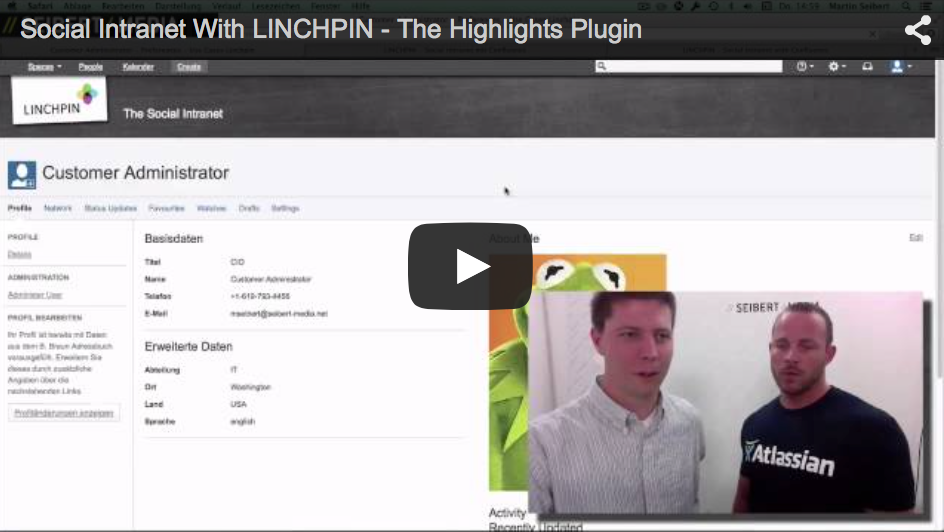The Highlights plugin within the LINCHPIN social intranet allows different corporate news to be published to different user groups, depending on their location, department or other variables. It is based on the Custom User Profile plugin. In this video, Martin Seibert and Eric Klein demonstrate the features of the Highlights plugin.
Social Intranet with LINCHPIN – The Highlights Plugin






